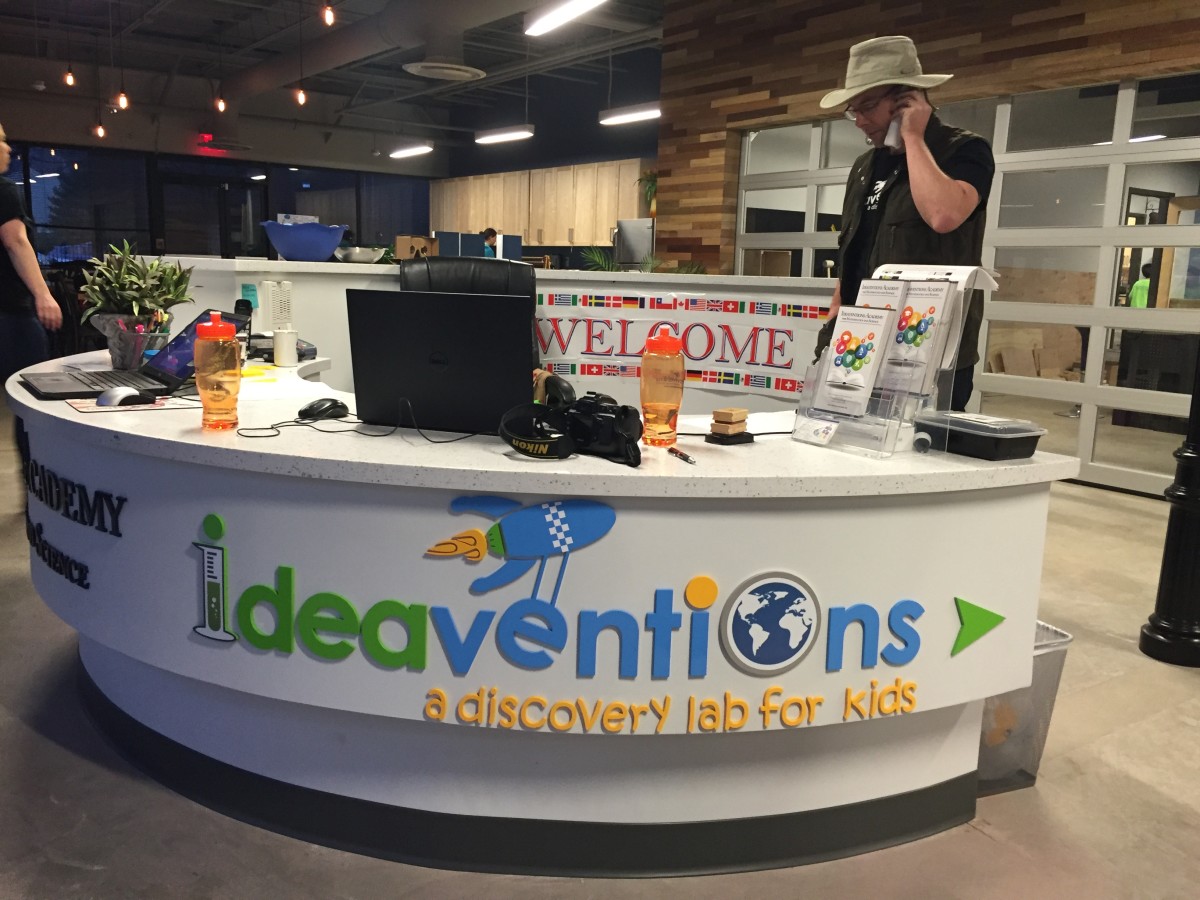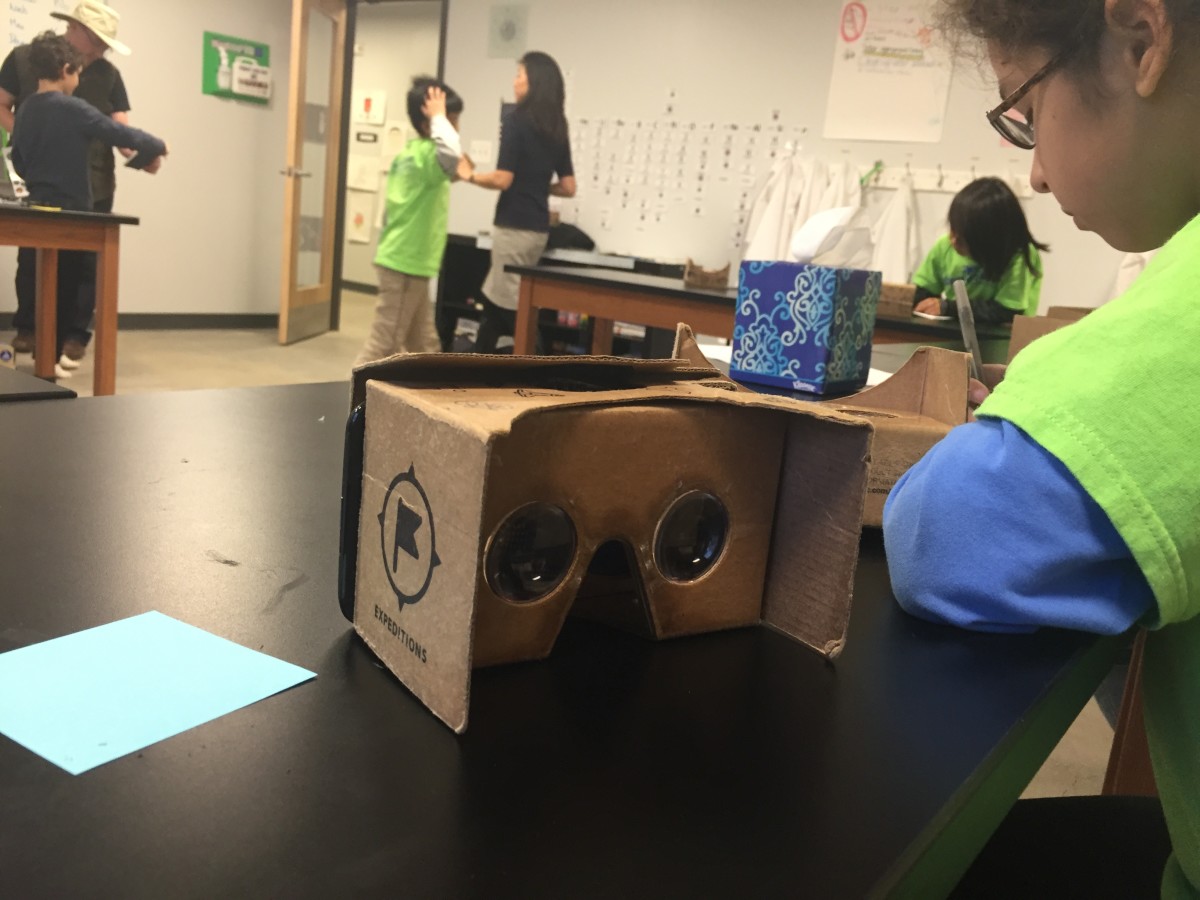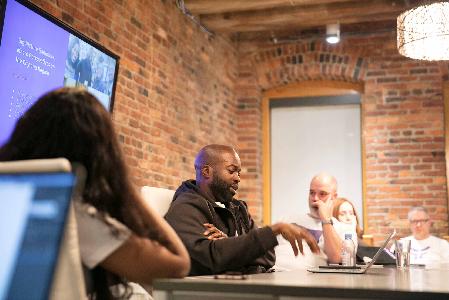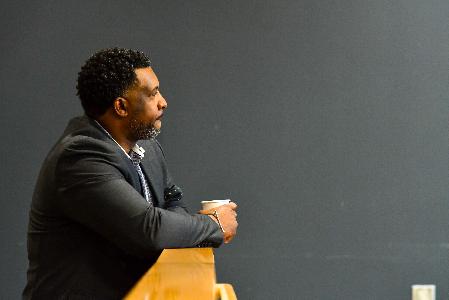Physically, they we’re in the suburbs of Reston, Va., somewhere near Dulles International. But instead of office buildings and parking lots, our attention is focused on (it must be said) a rather sad-looking coral reef.
Nine sixth- and seventh-grade students, noses pressed to their Google Cardboard headsets, twirl and wiggle in their seats as they explore their virtual environs. A tenth student, a quiet boy, leads the others around the reef via a tablet, explaining what they can see. He reveals that we’re somewhere off the coast of Hawaii.
“What kind of fish is that?” one student demands as a large fish caught in a crawl net swings into view. “I don’t know,” the ‘teacher’ admits, “But this coral reef isn’t healthy. It’s probably been dynamited.”
On Jan. 7 the Ideaventions Academy in Reston, a brand-new STEM-focused private school, took part in the Google Expeditions pioneer program. Technical.ly took a trip to the ‘burbs to check it out.
Expeditions is Google’s VR platform made specifically for the classroom — allowing teachers to take their students on immersive field trips all over the world and even, as the case may be, under the water. The Ideaventions Academy jumped at the opportunity to be a part of the pioneer program because it fits with the experimental ethos of the school.
This comes as no surprise once you meet Ryan Heitz, the founder and head of the school. Decked out in a safari hat and vest for the big day, Heitz is a passionate and energetic and earnest man.
The other reason he’s excited about Explorations, Heitz told Technical.ly, is because the pilot program offers the opportunity for his students to help mold what the project eventually becomes. Heitz feels strongly that his students become the shapers of technology, not just passive consumers.
This intent shows in many aspects of how Ideaventions teaches technology. Whether for their math classes or computer science classes or even in the humanities, the students at Ideaventions do a lot of hands-on projects. For example, the fourth- and fifth-grade students are currently working to build, and code, a Harry Potter-inspired picture of animations with embedded motion sensors to get that Hogwarts feel. It’s not entirely clear to me what this will look like when finished, but it sounds magical.
Coding in the fourth grade isn’t the only way Ideaventions is unique, though. The school was launched just last year and only has 20 students at the moment, split between a fourth- and fifth-grade cohort and a sixth- and seventh-grade cohort. Next year they’ll add on eighth grade, and Heitz told me he also has plans to expand into high school.
For that, they’ll need to move from their small-but-cozy building in a Reston office park. Heitz tells me he wanted the space to be “a fusion between a tech workplace and home.”
A quick tour confirms that many of the kids are milling around in socks, and the classrooms are named after famous inventors (think Tesla, Pasteur and Da Vinci) — yeah, it has a certain startup vibe.
Back in the classroom, the fourth- and fifth-graders and I take an expedition to the moon. Along the way we discuss things like how long it would take to drive to the moon at 60 mph (math!), why the earth doesn’t have the same types of craters as the moon (geology!) and who the first guy was to walk on the moon (history!).
In the last 40-minute period of the day, I join the sixth- and seventh-graders again for a trip to CERN (I joined late in the day so I’ve missed historic Philadelphia, the Amazon and El Capitan, among many other places). It’s been a long day, and the topic of particle physics is a little bit too abstract.
“How do you think the scientists get up from there?” one boy asks, “do they have elevators, or do they have to take the stairs?”
Oh, the things you’ll learn.
Before you go...
Please consider supporting Technical.ly to keep our independent journalism strong. Unlike most business-focused media outlets, we don’t have a paywall. Instead, we count on your personal and organizational support.
3 ways to support our work:- Contribute to the Journalism Fund. Charitable giving ensures our information remains free and accessible for residents to discover workforce programs and entrepreneurship pathways. This includes philanthropic grants and individual tax-deductible donations from readers like you.
- Use our Preferred Partners. Our directory of vetted providers offers high-quality recommendations for services our readers need, and each referral supports our journalism.
- Use our services. If you need entrepreneurs and tech leaders to buy your services, are seeking technologists to hire or want more professionals to know about your ecosystem, Technical.ly has the biggest and most engaged audience in the mid-Atlantic. We help companies tell their stories and answer big questions to meet and serve our community.
Join our growing Slack community
Join 5,000 tech professionals and entrepreneurs in our community Slack today!








